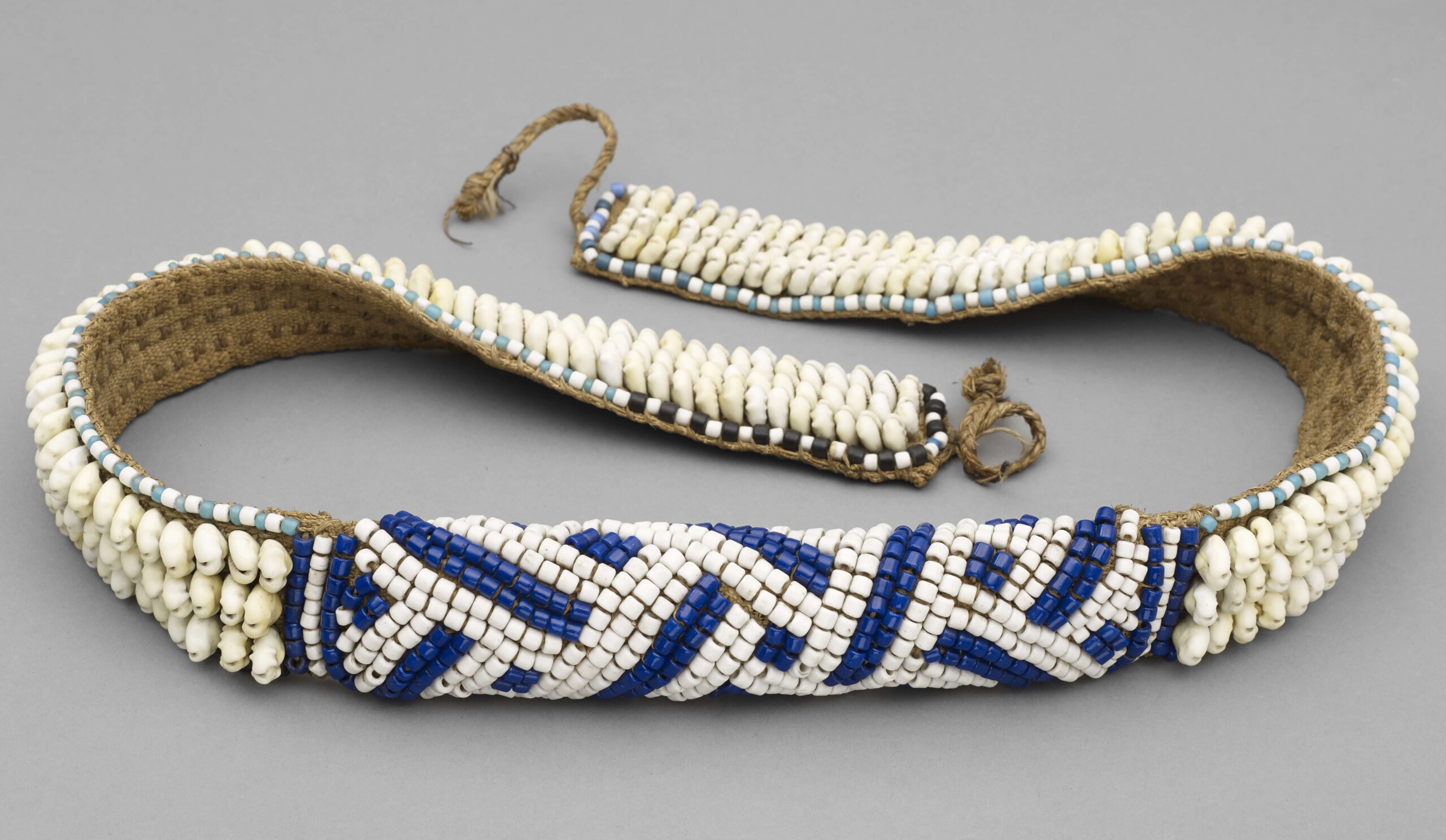
in 中文-粵語 / 粤语 / 廣東話 / 广东话 / Yue Chinese / Cantonese translated by Deborah Ng
This object has been translated into 8 different languages by 8 different users
哩條由分別白色同藍色嘅串珠同貨貝殼組成嘅腰帶,係一百年前由現今剛果共和國嘅古巴人製作(勿與古巴共和國人民混淆)。條腰帶係喺桑庫魯河隔離整出嚟嘅。
貨貝曾經係哩帶地區嘅貨幣嚟,所以喺腰帶上展示貨貝係近乎表現佩戴者嘅財富同權利。今日嘅人依然穿戴哩種腰帶去參加儀式活動。
你平時着咩去慶典同活動㗎?
- Apparently, the Chinese (along with many parts of Asia) used cowrie/cowry shells as currencies as well. Hence, most words associated with finance has the word 貝, the character for shell. Cowries are now more commonly referred as 貨貝, which directly translate as ‘stock shell’ or ‘currency shell.’ What a fitting vocabulary for the context of this artefact!
- It was difficult to translate ‘Kuba’, as I couldn’t find an official Chinese name for Kuba. The Mandarin translation here is good for Mandarin, but it doesn’t translate the phonic pronunciation well with Cantonese Chinese. I resorted to using 古巴, which coincidentally shares the name with Cuba (South America). Since I don’t want to sacrifice the phonic authenticity of my translation, I added a note saying that the Kuba people is not to be confused with Cuban people.
Report License: CC Attribution - Creative Commons Learn moreDo you have something you’d like to say, in your own language or English, about the object or translation? We’d like to hear what you think.
Translations are community-sourced and for anyone to participate in, however you use your language. For more information, see Community Guidelines.
Write a Reply or Comment